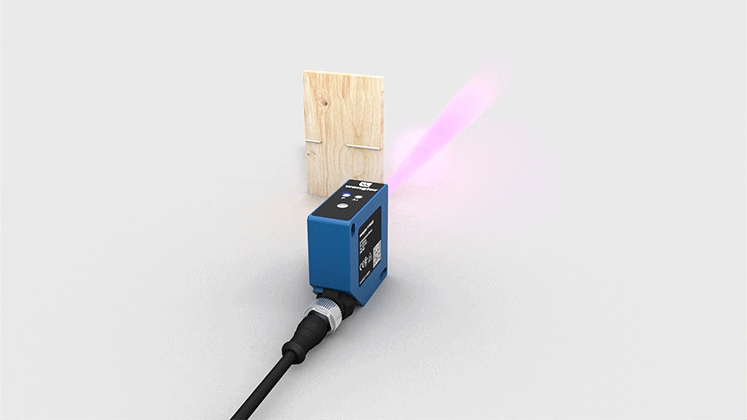Luminescence
Luminophores
UV Light
How Luminescence Sensors Work

Luminophores are pigments that are stimulated to glow by UV light. At the same time, the fluorescent substance converts the UV light into long-wave light visible to the human eye (in a wavelength range of 420 to 750 nm). The reflected light is received and processed by luminescence sensors.
It is important here that the activation frequency and emitting frequency match. This reflected light actuates the reflex sensors to send an output signal to a controller.
How Filters Impact the Result
With a filter, specific wavelength ranges are suppressed, meaning that light only reaches the receiver in a certain range. The use of a filter has the advantage that disturbing background luminescences can be suppressed. The luminescence sensor is available in two different versions, which differ in their receiver filter.

Detection of Different Luminescence Colors
Detection of Markings on Luminescent Objects
Luminescent Markings from Two Perspectives
Luminescence Sensors for Detecting a Wide Range of Materials

Materials with Natural Luminophores
Natural luminophores, for example, are found in white paper. This lights up blue under UV light and can be detected by the P1PA001 luminescence sensor through its blue-permeable receiver filter.

Materials without Natural Luminophores
Luminophores can be artificially added to almost all materials. As luminophores are not visible to the human eye, they do not impair the appearance of the product.

Color and Contrast Differences
For the luminescence sensors, different colors or contrasts of surfaces have no effect on the detection of luminescent markings.

Strong and Weak Illumination
The reliable detection of luminescent markings using UV light is not influenced by strong or weak ambient lighting.
Possible Uses for Luminescence Sensors
Presence Check

Luminescence sensors reliably detect the presence of various media, such as glue, oil, ink or lubricant. The sensor also check the presence of leaflets for pharmaceutical products.
Label Monitoring

Luminescence sensors monitor labels on food cans, bottles, pharmaceutical products and other products.
Counterfeit Detection and Quality Control

The authenticity of products and materials can be verified with luminescence sensors. The quality of wood is also checked by the detection of knotholes.








